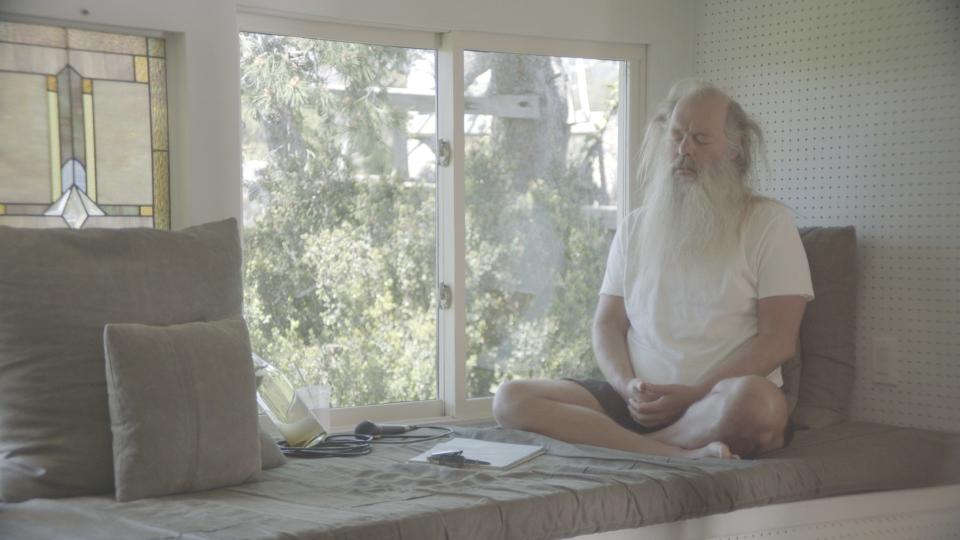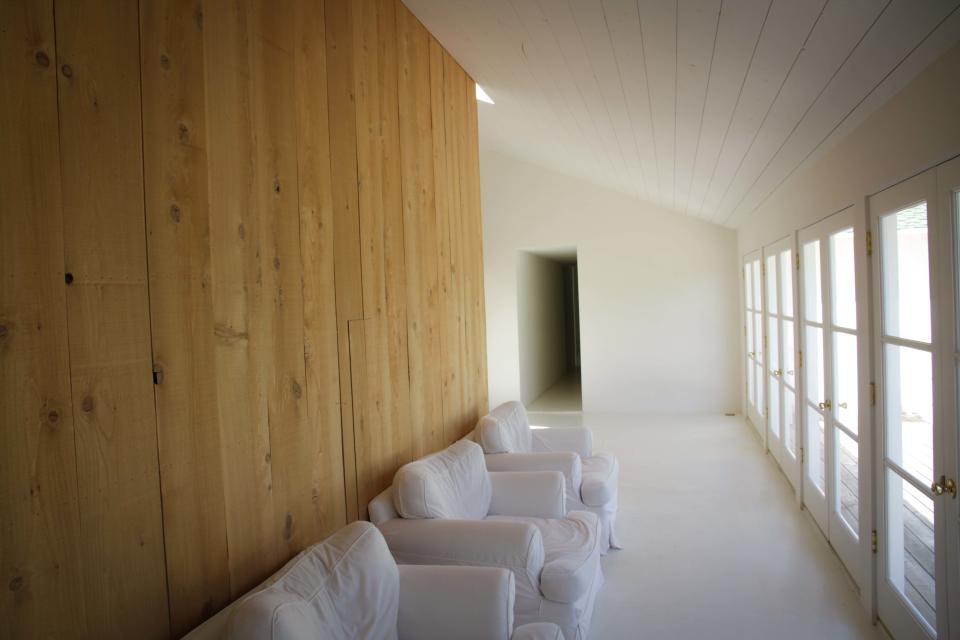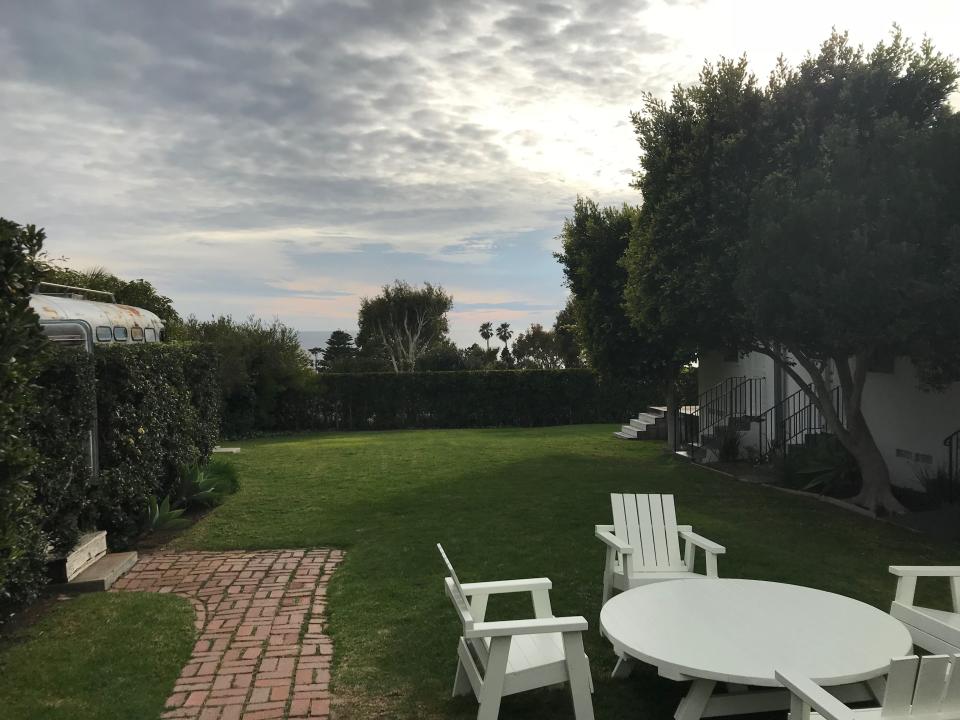Shangri-La Explores Just What Makes Rick Rubin’s Recording Studio So Conducive to Creativity
In all the buzz about the new Showtime documentary Shangri-La, it’s been noted that the four-part series is not quite just a biography of music producer and former Columbia Records copresident Rick Rubin, and not quite just a historical look at his recording studio, Shangri-La, in Malibu, California. The show, which concludes August 2, is both of those things, but mostly it is an exploration into what makes Shangri-La such a special space for musicians—not just historically, but right now.
Since Rubin purchased the property for $2 million in 2011, Shangri-La’s allure has been bolstered by his own allure, which of course comes a bit from his signature look (bare feet, T-shirt, wild gray hair and beard), and a lot from his work with artists like Run-DMC, Kanye West, Adele, The Red Hot Chili Peppers, Johnny Cash, Lana Del Rey, Ed Sheeran, and many, many more. Before the Rubin years began, though, the place did have a rich history, which the documentary dives into in episode one.

SHANGRI-LA
“There are a lot of myths and a lot of truths, and we didn’t spend a lot of time trying to parse what was what,” says the show’s director Morgan Neville (he’s also behind the hit 2018 documentary about Fred Rogers, Won't You Be My Neighbor?). Instead, the filmmakers compiled sort of an oral history, beginning with the mononymous actress Margo, who built (and named) the home in 1958. In the 1970s, record producer Rob Fraboni turned the place into a recording studio which was used by Bob Dylan, Eric Clapton, and The Band, and was featured in Martin Scorsese’s 1978 concert documentary about the group, The Last Waltz. These details are the solid ones, and plenty of other stories feed the legend, including speculation that Elvis was once a tenant and that a teenage guru “would receive his worshippers in what is now the live room of the studio,” says Neville.
In clips from The Last Waltz, which are interspersed throughout Shangri-La, you see that the home’s kitchen has largely remained unchanged since it was a hangout for Robbie Robertson, Levon Helm, and company. It is a time capsule of pink countertops, a pink backsplash, and pink ovens with white wooden cabinetry. (Kim Kardashian once caught some internet flack for posting pictures of herself and West there, with people commenting on the fact that the multimillionaires appeared to be posing in a middle-class home.) The show also reveals the basement of the house, which operates as a full-on library of music history.
The other main spaces in the house—where the music gets made—have been reimagined by Rubin as quite minimalistic in both design and decor, with stark wood and white walls, simple navy blue or white couches, a pool table, and not much else. Except, of course, for plenty of state-of-the-art music equipment, both modern and vintage. Perhaps the most iconic area of the space is a small window with a stained glass design, next to a bench where Rubin often lounges while working with artists. (In one episode, he notes that one rumor he’s heard about himself is that he doesn’t do anything because he lies down when he works.) Also on the property is a recycled tour bus which once belonged to Dylan and another detached recording space with an indoor-outdoor feel, high ceilings, and a cross-shaped window.

shangri-la
A meticulous level of effort goes into resetting the space in between artists—including a fresh new coat of white paint—to ensure that anyone who comes there to work can have the same inspirational experience. "Generally speaking, the creative process is subtractive, you have to remove as many distractions as possible. You have to set aside the time and space to do it without interruption," the studio’s Director of Operations Eric Lynn tells Architectural Digest. “One of the things that Shangri-La does really well with its minimalist design is taking away the distractions of clutter— there’s not a television, there’s not a clock telling you what time it is. It’s like a blank canvas.”
Surrounded by a lush yard with ocean waves crashing not far away, the space looks strikingly different from the stereotypical dark recording studio. "The studios allow the artists to remain connected to the natural world," says Lynn, explaining that many bunker-like studios were built with the goal of keeping external sound out, but modern advances in recording technology have made that a bit less necessary. Of course, there are silent rooms at Shangri-La, but the overall serene atmosphere is really the draw. “Those rooms have their place—like when people are mixing for film, they may need a perfectly scientifically designed room—but when artists are writing and recording music, to be in an inspiring space is the most important thing," Lynn says.

shangri-la
Clearly, Rubin was very intentional when creating this artists’ haven. And as an executive producer on Shangri-La, he was intentional about telling its story as well. Not wanting the piece to be a biography of himself, he didn’t let the cameras in to his own home. He did, however, sit in conversation with numerous artists and people from his past, and he was sure to do it in style. “Rick is very interested in architecture and he said if we’re going to do interviews, let's do them in interesting architectural spaces,” says Neville. So the series shows Rubin chatting with LL Cool J at the Lloyd Wright–designed Jaws House in Los Angeles, visiting the Eames House in Pacific Palisades, California, with Weezer front man Rivers Cuomo, and with author Seth Godin at The Cathedral Church of Saint John the Divine in New York City, though in each instance, the location isn’t made very obvious.
“We’d always shoot established shots at these places, but then we would never use them,” says the show’s codirector, Jeff Malmberg. “It is kind of an odd effect—there are no real established shots [in the documentary], except for Shangri-La.”
It seems fitting; Shangri-La is the star of this show. “Maybe we’re not doing the biography of Rick Rubin, maybe we’re doing a biography of a building,” says Malmberg. “That was really interesting to see it through those eyes, to see what haunts that place and what injects that place with creativity. It is interesting when you work on something so long what you get to really focus on. For me it was how architecture affects and makes creativity flow.”
Originally Appeared on Architectural Digest

